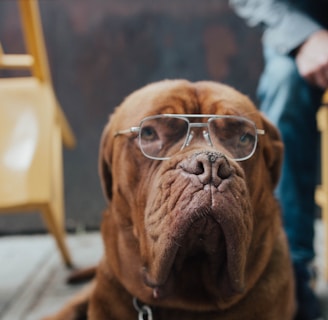Prime Dog Adulthood - Signs of Maturity
There are other signs of maturity that dog owners should be aware of. These signs can vary depending on the breed and individual dog
DOG HEALTHDOG LIFESTYLE
12/8/20233 min read


Signs of Fur Color Change
A dog's coat can be a canvas reflecting the passage of time. We can learn a lot from the changes in coat color, the emergence of gray hairs, and alterations in fur texture that can be indicative of the dog entering adulthood. Adult dogs undergo changes in coat color and texture as they age.
Just like humans, dogs go through different stages of life, and one of the most noticeable changes can be seen in their coat. As puppies, their fur is often soft, fluffy, and vibrant in color. However, as they grow older and enter adulthood, their coat undergoes various transformations.
One of the most common changes is the appearance of gray hairs. These gray strands are often seen around the muzzle, eyes, and sometimes throughout the entire body. While it may be disheartening for dog owners to see their beloved pet's coat changing, it is a natural part of the aging process.
The graying of a dog's coat is primarily caused by a decrease in melanin production. Melanin is the pigment responsible for the color of the hair, skin, and eyes. As dogs age, the melanocytes, which are the cells that produce melanin, become less efficient, resulting in the loss of color in their fur.
Additionally, the texture of a dog's coat can also change as they mature. Puppies typically have soft, fluffy fur, but as they grow older, their fur may become coarser and thicker. This change in texture is often more noticeable in certain breeds, such as poodles or terriers.
While coat color changes and graying are common signs of maturity in dogs, it is essential to note that not all dogs will experience these changes at the same rate or to the same extent. Factors such as breed, genetics, and overall health can influence the timing and severity of these changes.
It is also important to remember that coat color changes and graying do not necessarily indicate any health issues in dogs. They are merely a natural part of the aging process. However, if you notice any sudden or drastic changes in your dog's coat, it is always best to consult with a veterinarian to rule out any underlying medical conditions.
As dog owners, it is our responsibility to ensure that our furry companions are well taken care of throughout their lives. This includes providing them with a balanced diet, regular exercise, and proper grooming. Regular brushing and grooming not only help maintain the health and appearance of their coat but also allow us to monitor any changes or abnormalities.
In addition to coat color changes and graying, there are other signs of maturity that dog owners should be aware of.
These signs can vary depending on the breed and individual dog, but some common indicators include:
Decreased energy levels
As dogs age, they may become less active and have lower energy levels compared to their younger counterparts. This is a natural part of the aging process and should not be a cause for concern unless accompanied by other symptoms.
Increased sleep
Mature dogs tend to sleep more than younger dogs. They may require more rest and downtime to recover from physical activities or simply due to the natural slowing down of their bodies.
Behavioral changes
Some dogs may exhibit changes in behavior as they enter adulthood. They may become more calm, less playful, or develop a preference for a more relaxed lifestyle. However, sudden or drastic behavioral changes should be addressed with a veterinarian to rule out any underlying health issues.
Joint stiffness
As dogs age, their joints may become stiffer, leading to a decrease in mobility and flexibility. This can be managed through regular exercise, a healthy diet, and joint supplements if recommended by a veterinarian.
Dental issues
Just like humans, dogs can develop dental issues as they age. Regular dental care, including brushing their teeth and providing appropriate chew toys, can help maintain their oral health.
Weight management
As dogs age, their metabolism may slow down, making them more prone to weight gain. It is important to monitor their diet and ensure they are getting the right amount of exercise to maintain a healthy weight.
While these signs of maturity may be common in adult dogs, it is crucial to remember that every dog is unique, and their aging process may vary. Regular check-ups with a veterinarian can help identify any potential health concerns and ensure that your furry friend is aging gracefully.
As dog owners, it is our privilege to witness our pets grow and mature. Embracing the changes in their coat color, texture, and overall behavior is part of the journey. With love, care, and attention, we can provide them with a fulfilling and happy life throughout their prime adulthood.
Subscribe to our newsletter
HEALTHY DOGGOS 2023 COPYRIGHT
